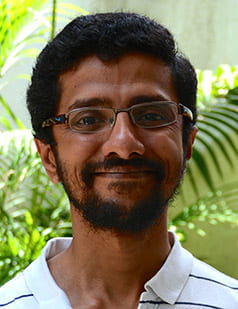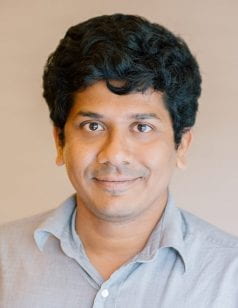3PointTM
Transmission Matrix
A transmission matrix (TM) describes the linear relationship between input and output phasor fields when a coherent wave passes through a scattering medium. Measurement of the TM enables numerous applications, but is challenging and time-intensive for an arbitrary medium. State-of-the-art methods, including phase-shifting holography and double phase retrieval, require significant amounts of measurements, and post-capture reconstruction that is often computationally intensive.

Graphical Illustration of 3PointTM. We vary the phase at each SLM pixel to three values, of which one is shared across all pixels, and measure the resulting intensity image on the camera. The TM matrix is estimated from these intensity images and enables us to perform focusing and imaging operations.
3 Point Transmission Matrix
In this paper, we propose 3PointTM, an approach for sensing TMs that uses a minimal number of measurements per pixel — reducing the measurement budget by a factor of two as compared to state of the art in phase-shifting holography for measuring TMs — and has a low computational complexity as compared to phase retrieval. We validate our approach on real and simulated data, and show successful focusing of light and image reconstruction on dense scattering media.
Minimum Measurements
More Info
Our main contribution is a near-optimal measurement strategy that measures an M × N TM from 2N + 1 intensity measurements. Our approach provides an analytical expression for estimating the TM from the acquired measurements and is computationally efficient.
Through Scattering Media
More Info
We validate our approach using a lab prototype, using which we scan several optical media and demonstrate applications in the form of inverse scattering and focusing through the media
Widely Applicable
More Info
We present detailed empirical analysis of the stability of our method under different operating conditions, including the number of SLM pixels and the signal-to-noise ratio of the measurements, as well as comparisons to prior art.

Performance comparisons. (left) We compare the focusing efficiency of 3PointTM, four-step holography, a genetic algorithm (GA) and prVAMP on randomly generated TMs of size 2562 × 162. Both GA and prVAMP are robust against noise, in part due to the larger number of measurements, while the focusing ability of both four-step holography and 3PointTM degrades as noise increases. (right) We compare the focusing efficiencies of the aforementioned four methods under the same settings, but at 4N image measurements for all of them.

Experimental setup of 3PointTM

Reconstruction results for imaging through a 20 degree diffuser and tissue phantom.

Reconstruction results for imaging through a 20 degree diffuser at higher resolution. The setup is the same as that in Figure 8, but the TM has 1202 SLM pixels, which increases the degrees of freedom by 4 folds.

Focusing results through scattering materials. Laser light is focused through a 20 degree diffuser (top row) and a tissue phantom (bottom row) by displaying different combinations of rows of the computed TM onto the SLM. Without input modulation, only speckle patterns are recorded on the camera.
People

Yujun Chen

Manoj Kumar Sharma

Ashutosh Sabharwal

Ashok Veeraraghavan

Aswin C. Sankaranarayanan
